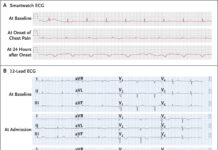- Jaguar attacks on humans, however quite rare, are often fatal.
- This article will highlight the case of a three-year-old girl who was mauled by a Jaguar in a remote area of the Guyanese jungle.
- The patient was immediately transferred to a healthcare facility for her life-threatening injuries.
A three-year-old Amerindian girl presented to the emergency department after being attacked by a jaguar. The girl was attacked early in the morning by the Mazaruni River in the remote Isseneru Village, Cuyuni-Mazaruni (Region 7), Guyana. At the time she was attacked she was with her mother. They would go to the river every morning to bathe and wash clothes. According to the mother, she turned away from the child to tend to the clothes when she heard “screams and then saw the jaguar ripping away at her”.
The large adult jaguar dragged the 24 kg child into the nearby bushes with its jaws clamped on her head. The animal released the child only after residents of the area shot the animal after they heard her scream. Although it is rare for jaguars to attack residents in the area. The girl’s grandmother claimed that the animal attacked her a month before also, when they were at the river. She said, “the animal jumped on her and scraped her on her foot. But I hit it and it got away”.
The second attack caused grievous injuries
The second attack occurred at about 10:30 am. The girl’s relatives rushed her to the nearest health centre which was about 10 minutes away by speedboat. However, the relatives were under the impression that the child was already dead. They left her by the river and ran to get the health centre nurse. When the nurse found a pulse, the relatives waited for about 10 minutes for a river boat to take them to the nearest radio so they could call for help. The nurse nurse administered 200mL Ringers Lactate and 500mg metronidazole intravenously (IV) and dressed the wounds. However, the restless child removed the IV and dressing shortly after.
Moreover, a medical evacuation plane was quickly arranged, however, it took an hour to transport the girl to the airstrip via a speedboat. The child travelled an hour and a half to reach Georgetown, followed by a 15 minutes ambulance ride to the hospital.
The child reached the emergency department 5 hours after the attack
Given the available resources, the optimal treatment regime was followed. The patient was immediately taken to the emergency department critical area. On examination, her blood pressure was 64/42 mmHg, pulse 102/minute, temperature 99.3°F axillary, and respiratory rate 18/minute. Moreover, her random blood sugar was 258mg/dL.
Physical examination showed that the child was alert and cooperative with multiple deep laceration on her scalp, face and torso. A puncture of the skull was also noticeable. Portable chest radiograph and eFast exam were unremarkable. The patient was advised a computed tomography (CT) without contrast.
CT showed fractures along the left frontal bone extending to the superior border of the left orbit, cortical and intrahemispheric pneumocephalus, non-hemorrhagic oedema in the left frontal lobe and soft-tissue swelling of the face and scalp.

After four hours the patient’s blood pressure was 100/62mmHg, pulse 100/minute, temperature 99.8°F axillary, and respiratory rate 32/minute. She was taken to the operation room. On exploration they found an open fracture to the left left fronto-temporal region and depressed fracture in the left middle parietal bone associated with bony defects of the left frontal zygomatic arch and left temporal bone.
The depressed fracture was flushed with normal saline, the edges were debrided and the skin was closed. The open fracture was closed and the laceration extending onto the left side of the face was repaired. After the operation, the child was kept on ventilator and under observation in the intensive care unit. She was discharged from the hospital 22 days after the incident.
She returned home to normal activities. However, on follow-up there was some scarring across her face and a left ptosis because of a local nerve injury.
References
Jaguar Attack on a Child: Case Report and Literature Review https://www.ncbi.nlm.nih.gov/pmc/articles/PMC4380383/




